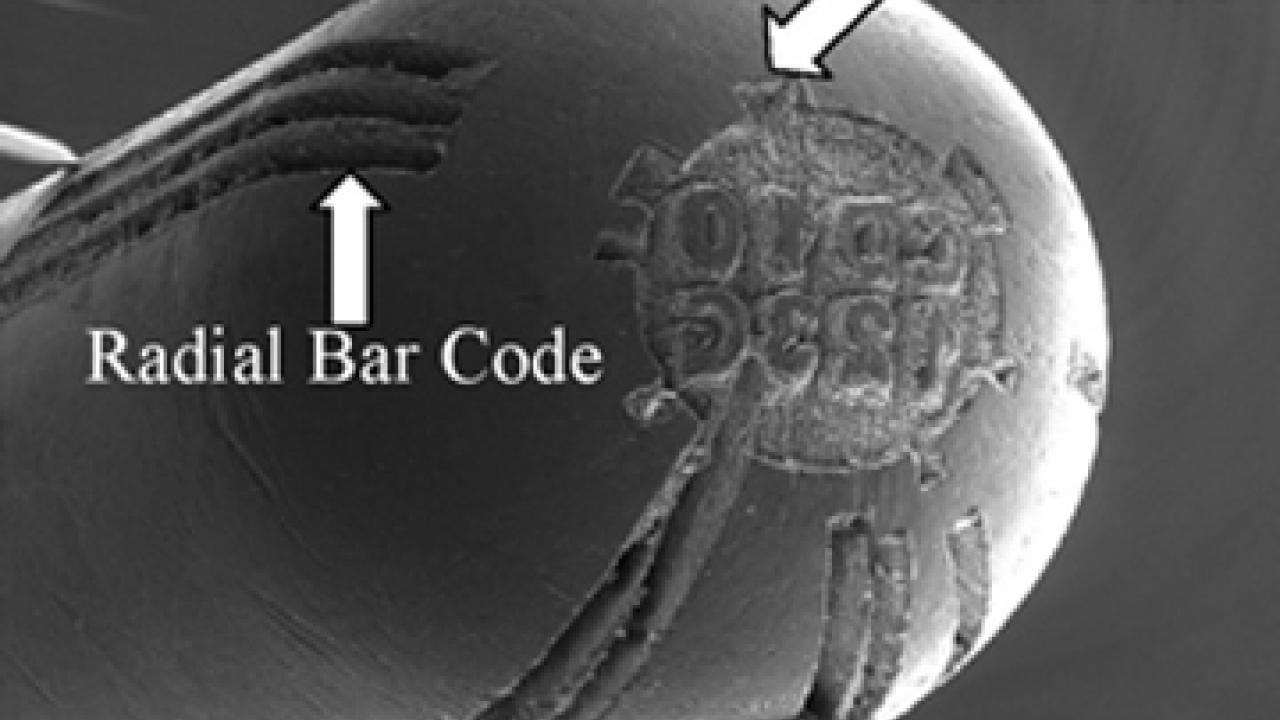New technology to link cartridge cases to guns by engraving microscopic codes on the firing pins is feasible but did not work well for all guns and ammunition tested by UC Davis' forensic science program. More testing in a wider range of firearms is needed to determine the costs and feasibility of a statewide program of microstamping, as called for by proposed state legislation, the researchers said.
The technology developed by ID Dynamics of Londonderry, N.H., uses a laser to cut a pattern or code into the head of a firing pin. The method is similar to that used to engrave codes on computer chips. When the trigger is pulled, the firing pin hits the cartridge case or primer and stamps the code onto it. In principle, the spent cartridge can then be matched to a specific gun.
If successfully implemented, microstamping would be one additional piece of evidence for investigators to gather in building criminal cases, said Fred Tulleners, director of the forensics program and foprmer director of the California Department of Justice crime lab in Sacramento, as well as the Sacramento and Sonoma county crime labs.
Graduate student Michael Beddow tested firing pins from six brands of semiautomatic handguns, two semiautomatic rifles and a shotgun. The firing pins were engraved with three different types of code: a letter-number combination on the face of the firing pin, a pattern of dots or gears around the pin, and a radial bar code on the side of the pin.
To study the effects of repeated firing, he fitted engraved firing pins into six Smith and Wesson .40-caliber handguns that were issued to California Highway Patrol cadets for use in weapons training. After firing about 2,500 rounds, the letter-number codes on the firing pin faces were still legible with some signs of wear. But other types of codes around the edge of the pins were badly worn. "They were hammered flat," Beddow said.
Tests on other guns, including .22, .380 and .40-caliber handguns, plus the semiautomatic rifles and a pump-action shotgun, showed a wide range of results depending on the weapon, the ammunition used and the type of code examined, Beddow found. Generally, the letter-number and gear codes transferred well to cartridge cases, but the bar codes on the sides of the firing pin performed more poorly.
The researchers did not have access to information allowing them to read the bar or gear codes, and so could not determine if these remained legible enough to be useful.
One known downside: Codes engraved on the face of the firing pin could easily be removed with household tools, Beddow found.
The researchers estimated that setting up a facility to engrave the firing pins of every handgun sold in California would cost about $8 per firing pin in the first year, falling to under $2 per firing pin in subsequent year.
David Howitt, a professor of chemical engineering and materials science, and chair of the Graduate Group in Forensic Science, supervised the project.
Media Resources
Dave Jones, Dateline, 530-752-6556, dljones@ucdavis.edu
